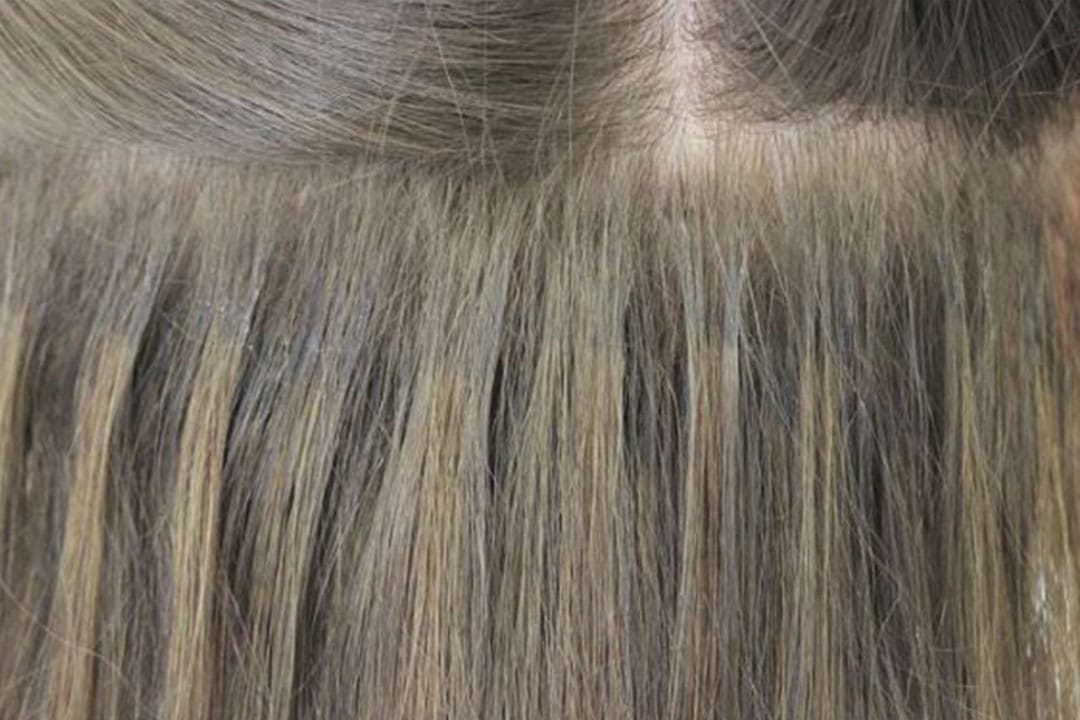Picture a bond so discreet it is almost invisible to the naked eye.

A technology creating more seamless results than previous other long-established extension methods.
An installation that shows no signs of where the hair ends and extension begins.
What is this breakthrough method reshaping the hair industry?
Say Hello to CombLine

Founded in Australia, the CombLine application allows stylists the opportunity to give their clients the best solution for their most pressing hair concerns. Read on to discover why you can’t ignore CombLine.
CombLine hair application can be applied to the fringe, top, sides, and crown, although stylists can apply a full head of extensions using CombLine, it is most common to target specific problem areas.
Only professional, licensed, CombLine Certified stylists can use the CombLine Hair Enhancement Application, all stylists are required to complete extensive CombLine Certification facilitated by Certified CombLine Master Educators.
What Is CombLine?
First—the very basics. The CombLine application system is a groundbreaking hair enhancement technique that allows stylists to create invisible and lightweight bonds. Using their favorite extension brand, stylists can achieve this hair-on-hair attachment with a comb-shaped tool and a medical-grade glue. Designed for both lengthening and thickening, suitable for all genders and ages, the CombLine application is truly a full-solution technique.
CombLine is one of the latest hair enhancement methods on the market and is capturing the attention of salon professionals globally with its unmatched results. 2,500 stylists receive certification annually in the United States alone, indicating a potential for this cutting-edge alternative to exceed traditional methods such as weft and fusion.
What Are the Benefits of the CombLine Application?
All in all, the CombLine application method is transforming the hair extension industry for its advantages over other popular methods:
- Seamless:While many extension brands claim to offer undetectable results, this method of joining the natural hair with the extension truly is unique in the industry.
- Versatile:Effective for all ages and genders; designed for thickening and lengthening; applicable for the fringe, top, sides, and crown—most extensions in the market fail to meet all these features, but the CombLine system checks every box.
- Comfortable:Because the CombLine system makes use of a medical-grade glue instead of bulkier application points like beads, the extensions are gentler to sleep on compared to other methods.
- Lightweight:Opting for a thin glue over heavier silicone extension beads makes for a lighter alternative.
- Thin-hair friendly: Homing in on small sections of the hair results in less weight on the scalp compared to installing a full weft of hair, for example. Making use of a hair-on-hair attachment also restricts the extensions from pulling at the natural strands.

What Can Be Achieved with CombLine?
Without a doubt, one of the biggest appeals of this new hair technique is its invisible bond. Yes, that means exposed beads and bands can be a thing of the past with CombLine.
To be clear, CombLine is not an extension itself—rather, it is a system for installing any extension brand or type. Of course, the extension quality you choose will determine the seamlessness of the final transformation. Opting for 100% Remy hair, the recommended hair grade for professionals, minimizes the risk of tangling and creates the most natural look possible.
Why is CombLine a Solution for Thinning Hair?
Consider one of the most frustrating battles for those with thin hair:
Wearing extensions may be more pivotal than any other hair texture, yet this hair type demands the most delicate, precise installations. The CombLine technique, fortunately, is one of the best ways to apply extensions for thin hair.
Because the extension attaches to the hair itself, fragile hair strands will not be at risk of being pulled by heavier attachment points. Since this new extension technology has one of the most invisible results on the market, it also does not require a lot of hair to conceal the attachments. Plus, taking a targeted approach also ensures users only have to wear the extensions in the areas most needing fullness.
Which Hair Type Works Best with CombLine
We associate the CombLine hair enhancement application most often with those who have extreme hair loss. And yes, for someone experiencing thinning near the crown, fringe or sides, the CombLine method brings remarkable fullness and is more discreet than a wig could ever achieve.
However, that doesn’t mean other hair concerns cannot benefit from the CombLine system as well.
Perhaps a salon guest is looking to add length with the most natural transition between their own hair and the extension. Maybe a routine clip-in wearer wants to pull their hair in a ponytail without worrying the extensions will show. Perhaps someone with fragile hair has experienced snagging from bulky extensions. Whatever the problem, the CombLine system can meet a variety textures and tresses.
